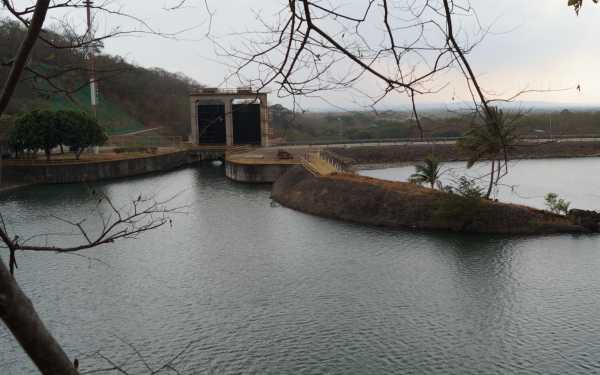With a formal ceremony, the construction of an aqueduct began, which will transport water from the Sandillal reservoir to the city of Cañas and the Bebedero community, in Guanacaste, so that its inhabitants can consume water without arsenic approximately within of 1 year and a half.
As reported by the Costa Rican Institute of Aqueducts and Sewers (AyA), officials of the Government of Costa Rica this afternoon placed the 1st tube of the “Drinking Water Supply Project for Cañas-Bebedero”, which will benefit 26,591 people from Cañas, Palmira, San Miguel, Drinker and Porozal.
The construction will be possible by a donation from the Government of China for an amount of ₡ 9.736 million and the construction company will be China Urban Construction Research Institute (CUCD).
Sandillal Reservoir, the Costa Rican Electricity Institute (ICE) catchment works, a water treatment plant, a pumping station, impulse pipes and conduction of the plant to the tanks and to the Bebedero community, and their respective interconnections will be built.

Communities are affected by pollution
The state intervention so that the people of the affected communities do not remain exposed to arsenic implies a safe system of drinking water supply for consumption, to prepare food and to irrigate food crops.
According to a report by the Ombudsman’s Office 2014, when people are exposed to low doses of arsenic in chronic form with drinking water, chronic endemic regional hydroarsenicism (HACRE) can occur, a disease that is characterized by certain Skin lesions and cancerous and non-cancerous systemic alterations. In addition, children exposed during the prenatal and postnatal period may have a lower cognitive development.
Background:
- The AyA carries out studies since 2009 on water quality in the area between Cañas and Bagaces, in Guanacaste.
- Studies have reported amounts of arsenic in water exceeding the World Health Organization (WHO) norm of 10 micrograms per liter in Guanacaste communities.
- For at least 2 years, the AyA, the Ministry of Health and the ICE knew that there was water for human consumption contaminated with arsenic, but they hid the information from the press and the population, according to a report by the Ombudsman of 2017, which has a copy.
- In June 2013, the Constitutional Chamber ordered the AyA and the Ministry of Health to solve this problem. The Chamber ruled in favor of the Remedy of Amparo (File 13-004193-0007-CO) filed by a large group of communities from Guanacaste and the north of the country, which alleged water supply for human consumption contaminated with arsenic and lack of solution real to this problem despite the threat of harm to the health of the inhabitants of these communities.
- Between 2011 and 2015 the AyA installed arsenic removal plants in the ASADAS of Montenegro, Agua Caliente, and Falconiana de Bagaces.

